Last Updated on December 15, 2023
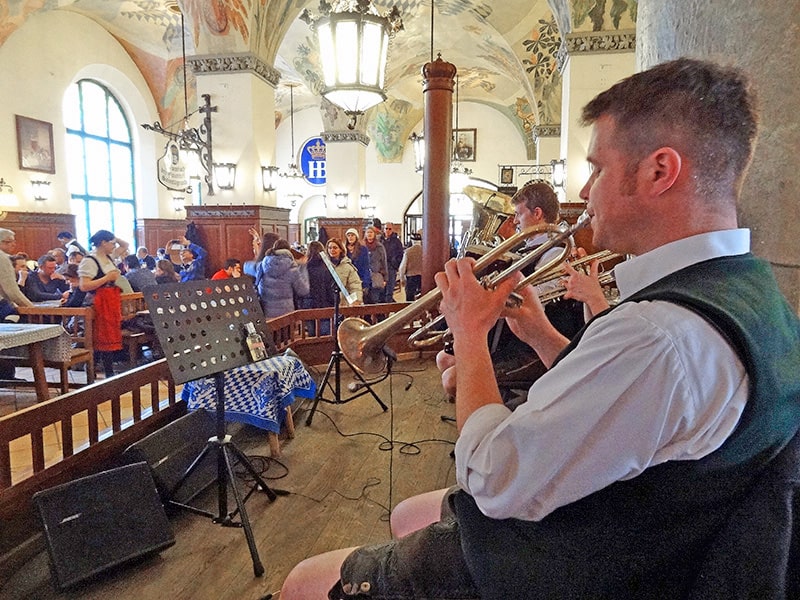
You’ll find plenty of things to do in Munich, any time of year, even in the winter…
Estimated reading time: 11 minutes
By Jim Ferri
Munich is a great city to visit, even in the off-season, and is one of the great German cities to visit.
I visited the city in March, when winter still sent an occasional snow shower through the streets. My wife and I were determined not to allow the weather to slow us down though, since we had only two days in Munich. In retrospect we could easily have spent a full week.
Here’s a roundup of the best things to do during two days in Munich. There’s also information on day trips from Munich, including how to get from Munich to Neuschwanstein Castle, Munich to Nuremberg by train, and Munich to Dachau.
Wanting to make the best use of our time, we enlisted the services of a guide from the tourist office for a few hours to help us.
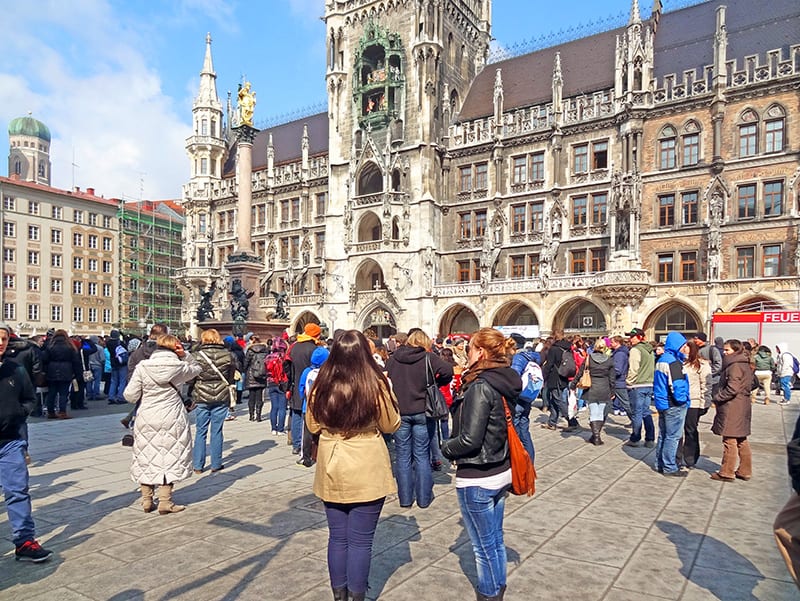
Two Days in Munich, Beginning With A Whirlwind Tour
We met Peter, our guide, in front of the Marienplatz, the old medieval marketplace, where you’ll also find the Rathaus, the City Hall. Sensing our urgency, he quickly had us off on a three-hour whirlwind walking-tour about the center.
In retrospect we were wise to have enlisted his help to show us the things to do in Munich. On our own we would have missed so many of the fascinating things in the old section of the city.
He whisked us into City Hall, pausing in the courtyard to point out the monk gargoyles. They are on the building because “Munich” comes from the German word for monks, the original founders of the city. The building “is pretty much as it was years ago,” said Peter, since it was only damaged in the war but not destroyed.
Further on we passed a montage of photos of Munich Jews deported to a concentration camp during the war.
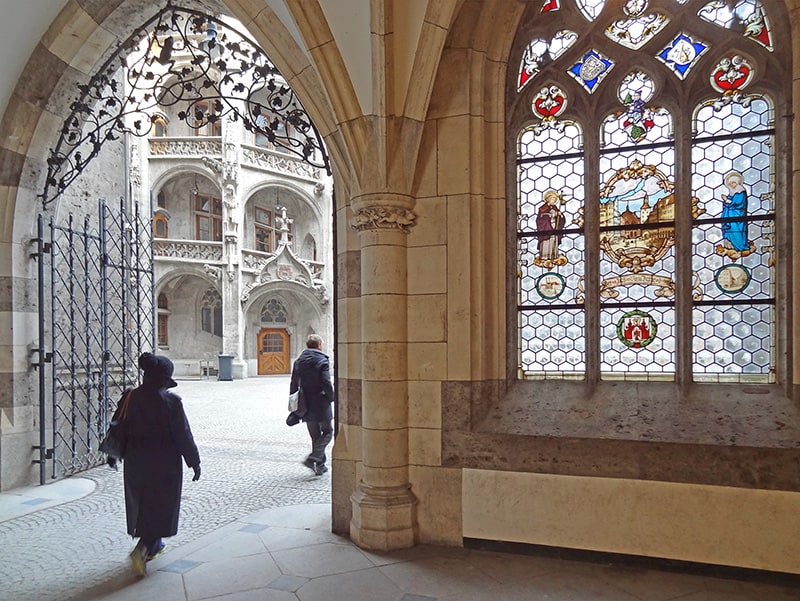
After a quick walk through parts of the building he had us outside once again walking at a good pace. As we walked he explained that Munich is the capital of Bavaria, which is larger than many European nations.
It’s also important in history because it was the base of different dynasties, prices, dukes and kings. As he whisked us into such places as St. Peter’s church, the oldest church in the city, you could sense the imperial hierarchy in the Baroque and Gothic architecture.
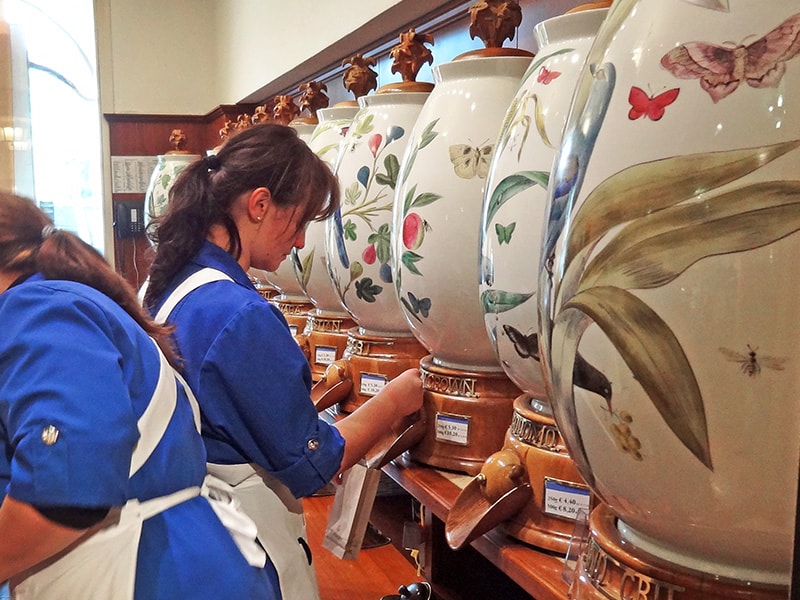
Purveyors to Royalty
Peter soon had us wandering through Dallmayr, the purveyor of food to royalty since 1700. It’s Munich’s answer to London’s Harrods and Fortnum & Masons. Customers come to Dallmayr not only to buy groceries, but also to dine in its restaurant above the marketplace (which I think for many, may be one of the top things to do in Munich).
It’s a really interesting place to visit, and its restaurant one of the a good place in Munich for a bite to eat, especially if you’re only there for a couple of days.
But If you’re more intent on shopping for non-edibles, head instead for Maximilian Strasse. According to Peter, it is the most important shopping street in all of Germany, a place where “label victims” come. One of them, a Russian, confided Peter, had bought the old Royal Post Office for €350 million. His intent was to turn it into “the house of Louis Vuitton.”
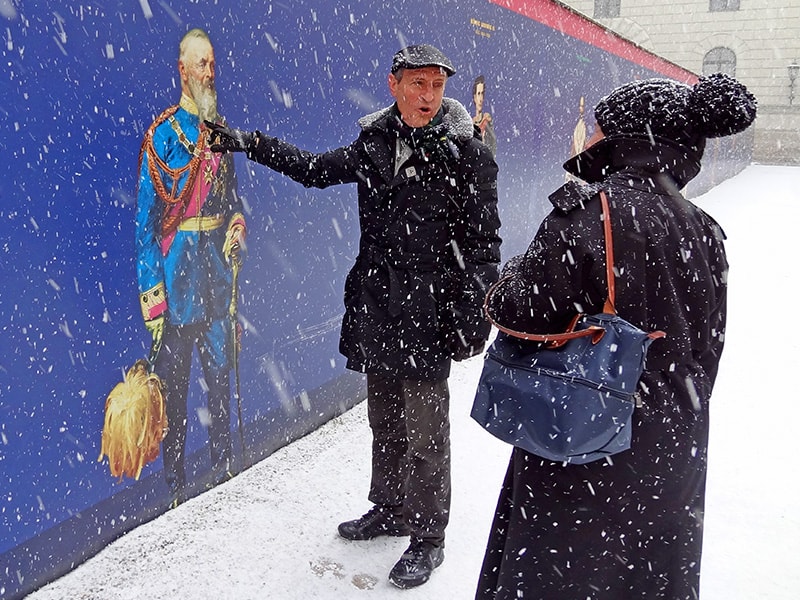
An Art and Musical Heritage
We continued to move quite fast, pausing only 15-20 minutes in each place. It was perfect due to our self-imposed constraint of allowing only two days in Munich. We were soon by the Residenz, the former residence of the Bavarian kings, now a museum for nearly 100 years.
Along with art, music is important to Munich and the city has four Symphony orchestras and two opera houses. Two of them – the National Theater and the Cuvilliés-Theater – are in the Residenz. The Cuvilliés, built 1751-55 is Europe’s finest Rococo theater.
Continuing along, Peter explained that although there are a lot of construction sites in Munich that have their benefits. Steering us to a nearby site he showed us where the fence had been transformed into a canvas. All along it were painted portraits of different Bavarian rulers and monarchs. It was an interesting history lesson.

Great Markets and Restaurants
After leaving Peter we had a coffee and an incredible strawberry cheesecake at Rischart’s Café on Marienplatz. Soon afterwards we wandered through another of the city’s must-see’s, the nearby Viktualienmarkt, one of Europe’s most renowned outdoor markets.
Adjacent to it is the Münchner Schrannenhalle, a specialty food hall on the site of the city’s old grain market. There we found everything edible from handmade chocolates and gummy bears, to aged beef. It’s also a good place to have lunch.
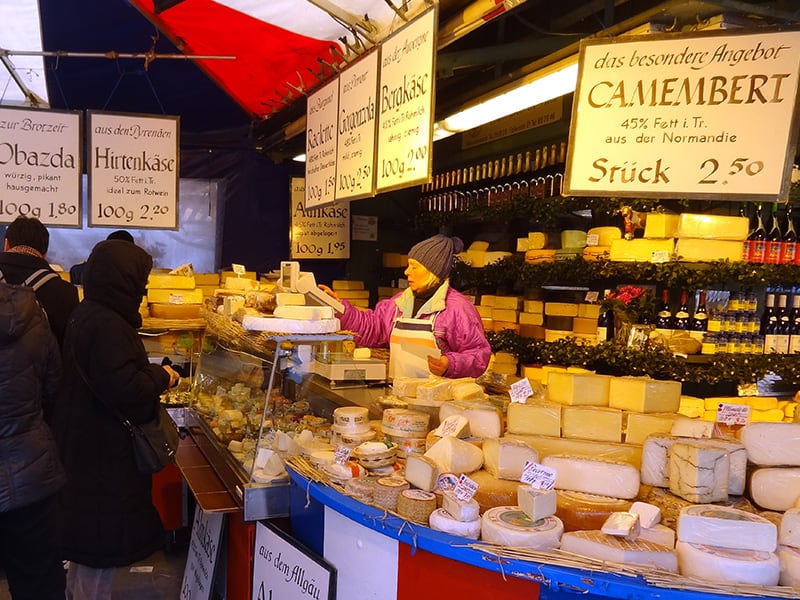
That evening we had dinner in the Ratskeller in the basement of the Rathaus. While it may sound like a tourist trap, it really wasn’t. In fact, it was one of the better things to do in Munich, since the food is excellent and it is popular with locals. It’s a large place with several different halls and rooms and worth a visit when you’re in Munich for a couple of days.
Leaving the Ratskellar, we found a combo of musicians playing classical music with a decidedly modern beat. A crowd had gathered around them, moving with the beat and listening to their comical quips in both German and English throughout their sidewalk performance.
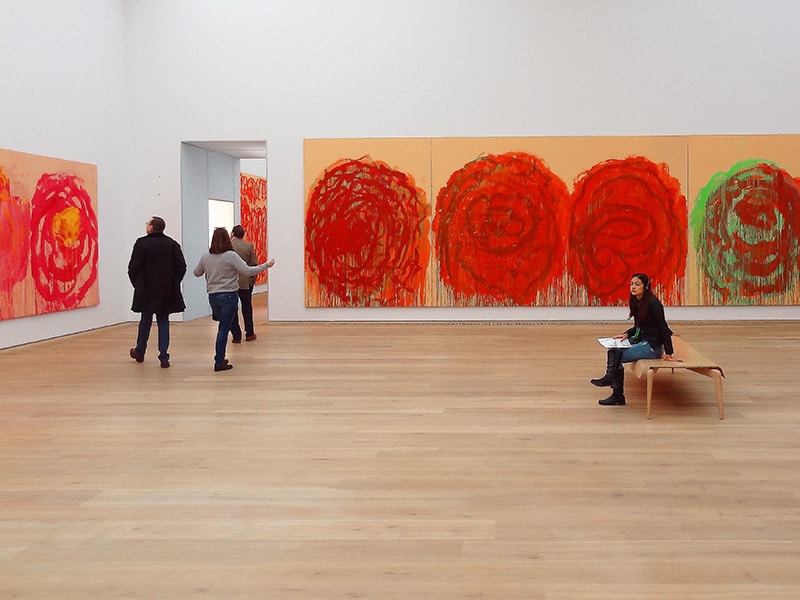
Museums for Everyone
Munich has more than 80 museums and the next day we spent time in two of them. The Brandhorst Museum is renown for its modern and contemporary art from the collection of Udo and Anette Brandhorst. It draws many people for its large collection of Andy Warhol’s works and that of other artists. But even if you’re not interested in the exhibits, you’ll find the building itself to be a modern masterpiece.
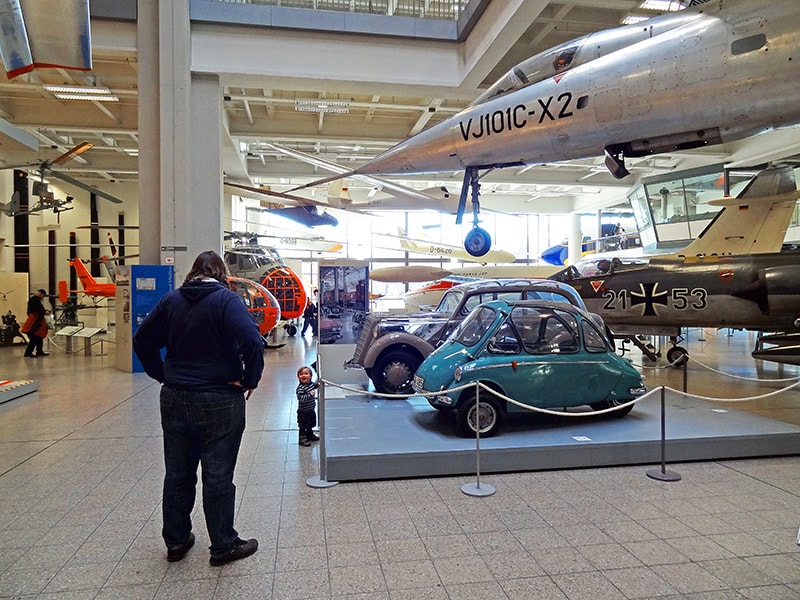
The other museum was the incredible Deutsches Museum , one of the largest and oldest science museums in the world. Both of us felt that visiting this museum was one of the best things to do in Munich for anyone. (See the article 10 Special European Museums Worth a Detour). Don’t let that science stuff put you off, however. It’s a place of interest to everyone – male, female, child or adult – since it holds many things for everyone. 1.5 million people visit it every year.
Once inside we viewed a sea-going barge sliced in half to show the inner workings of the ship. I also saw how tunnels are constructed. We looked at all kinds of planes and helicopters and explored DNA and nano-technology, even a model railroad. We visited only one of its large buildings, although there are three scattered about the city. It’s a “don’t miss,” and, as said, one of the best things to do in Munich.
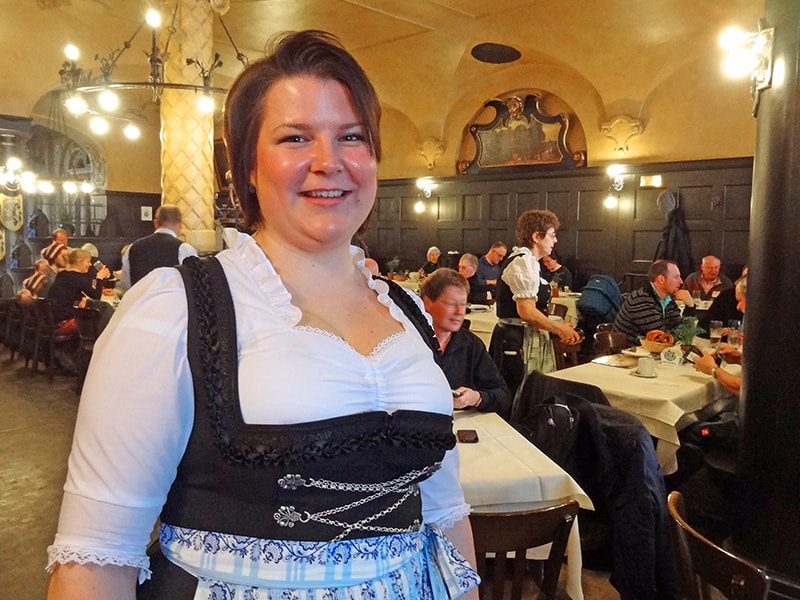
Another Thing to Do in Munich: Visit Its Famous Beerhalls
Another of the best things to do in Munich is to visit the city’s famous beer halls, most notably the Hofbräuhaus and Augustiner Brau. The 16th century Hofbräuhaus was founded when some Bavarian Dukes decided they didn’t liked the beer being brewed for them. They then made the decision to brew their own. Thus the “court brewery”, or Hofbräu was born, which today is still owned by the state.
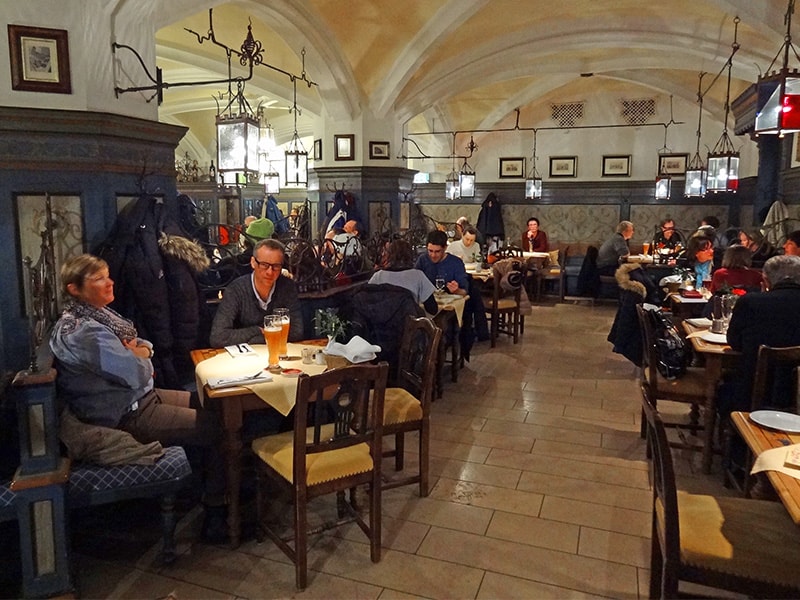
The Hofbräuhaus draws a large tourist crowd with its oompah band and Bavarian ambiance. When we arrived wound up sitting at a table with a mother and her daughter from Texas. They had just returned from a week of skiing in Garmisch-Partenkirchen. As we chatted I ordered a stein of the original Hofbräu (€7.30 per liter) and a Münchner Weisswürste, Munich’s original veal sausages. Both were great.
Despite the worldwide fame of the Hofbräuhaus, most Münchners prefer the less touristy Augustiner Brau. It’s named for the Augustinian Brotherhood of monks who founded both the city and the brewery.
You’ll find good food and beer here as well, and more than just a few men in their old Bavarian hats and jackets adding to the non-touristy ambiance. Stop in for a beer and you’ll feel that you’ve stepped back a hundred years or so. If you want to take a giant step back to old Germany, attend Munich’s über popular Oktoberfest, which begins in September every year.
You may also enjoy: Day Trips From Munich to 3 Great Bavarian River Towns / 6 Great Places to Visit in Bavaria / 26 Great European Day Trips by Rail / Bus
Although, as said earlier, we had only two days in Munich, we could have stayed much, much longer, it’s that kind of city. If you are staying in Munich for longer or even moving there, make sure you book your new home with HousingAnywhere, a company that offers private rooms, studios and apartments all over the city. It could save you a lot of money, which instead is better worth spending at the Hofbräuhaus or Augustiner Brau.
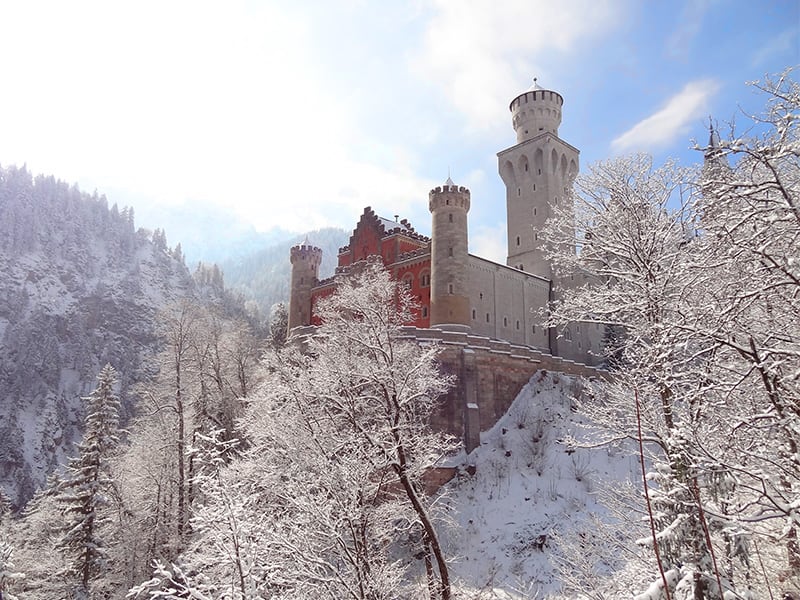
More Things To Do in Munich: Take Day Trips
Day Trip From Munich : Munich to Neuschwanstein Castle
– Traveling from Munich to Neuschwanstein Castle is a wonderful day trip from Munich. The castle is near the Bavarian town of Fussen. It also lets you see some beautiful scenery in Bavaria. It’s about a 1½ hour-drive, or a 2½-hour train ($55-76) or bus ride ($7-12) from the city.
Day Trip From Munich: Munich to Nuremberg by Train
– A day trip from Munich to Nuremberg by train will take you about a bit over one hour by train. There are numerous trains departing daily from the München Hauptbahnhof. The one-way fare is about $41 for 2nd-class, $58 for first class. If you prefer to drive, it’s about a 1½-hour trip.
Day Trip From Munich: Dachau Concentration Camp
– Opened in 1933, Dachau was the first of the Nazi concentration camps. If you’d like to visit Dachau, it’s quite easy since the train ($12-18) from Munich’s Hauptbahnhof takes only about 11 minutes. You can drive from Munich to the Dachau Concentration Camp Memorial Site in about a half hour. A taxi ($45-60) is also an option.

Leave a Reply